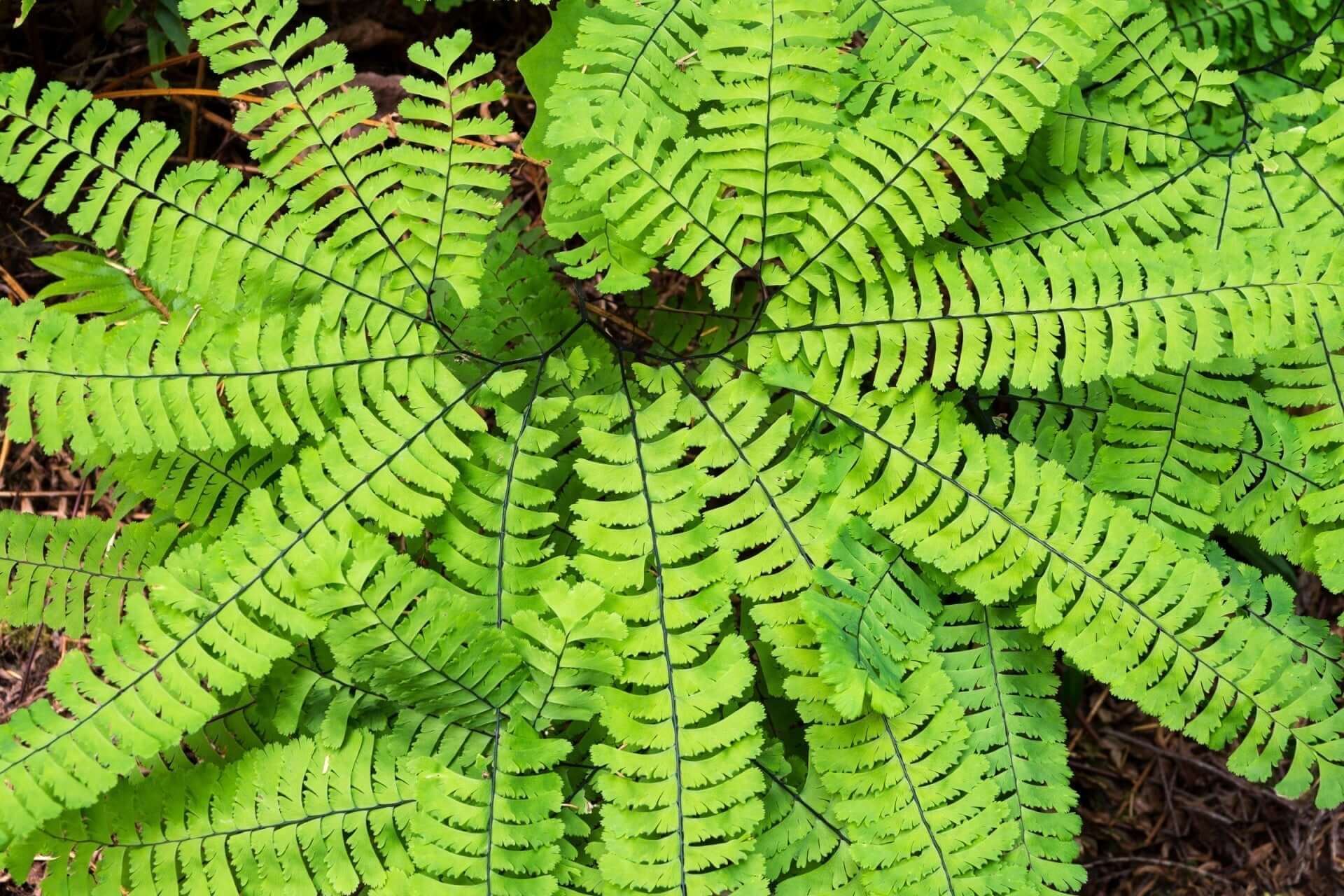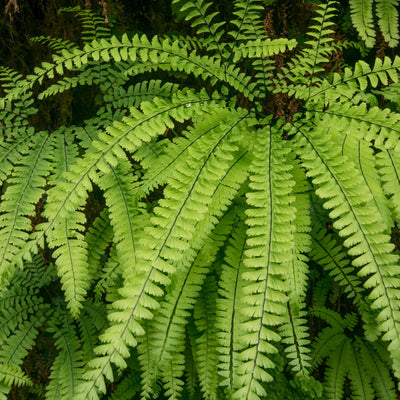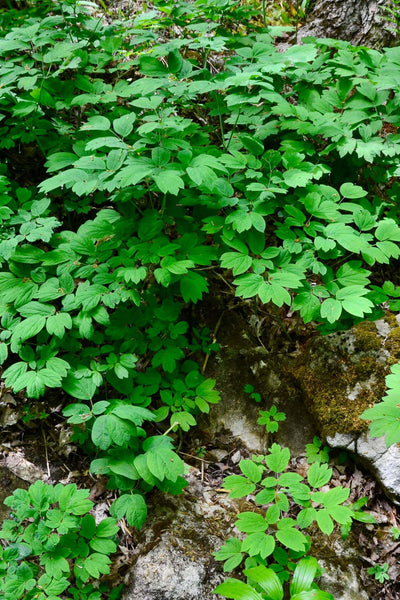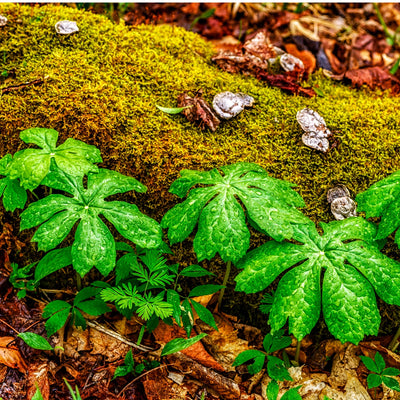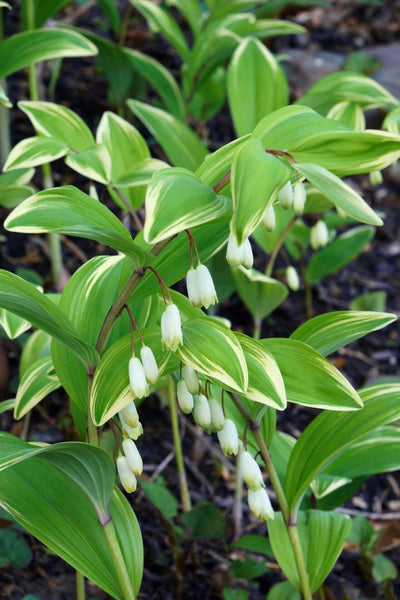The Maidenhair Fern is one of the most beautiful native plants that grows in shady areas. Its thin, fan-shaped leaves and make it stand out. Its feathery fronds arch beautifully and add a soft touch to flower beds, paths through the woods, or arrangements inside. Understanding proper maidenhair fern care will ensure that this beautiful plant will grow for many years.
This guide tells you everything you need to know about how to care for Maidenhair Fern from the best way to grow it to how much water and temperature it needs. We will also suggest native plants that grow well with ferns, such as Blue Cohosh, Mayapple, and Solomon’s Seal. These plants do especially well in shady areas.
Understanding Maidenhair Fern and Its Natural Habitat
The Adiantum pedatum plant, also known as the Maidenhair Fern, is native to North America and grows naturally in damp, shady woodlands. It does well near streams, rocky slopes, and forest floors, where the air is wet and light comes in through the trees.
Like other native plants, the Maidenhair Fern is perfectly suited to its environment and doesn't need much help once it's established. Because it does well in shade, it's a great choice for farmers who want soft greenery in dark spots or beds that get some shade.
Key Characteristics of the Maidenhair Fern Plant
- Light: Likes bright outside light that comes from the side or full shade.
- Soil: Soil that is rich, moist, drains well, and has organic matter in it.
- Water: Regular watering to keep the dirt damp all the time.
- Temperature: Works best in places that are cool and damp.
Within its natural habitat, this fern grows with Blue Cohosh and Mayapple, two other plants that need similar conditions to grow. When you put these native plants together, you get a lush, layered shade garden that is full of different textures and plants.
Proper Maintenance of Maidenhair Ferns
It's fun to grow a Maidenhair Fern, but you have to keep an eye on the humidity and wetness levels. Here's how to make sure that good growth happens, whether you're outside or inside.
1. Light and where it is
Maidenhair fern indoor care begins with the proper location. Choose a bright spot with some shade. A window facing north or east works well. Too much or too little light can hurt the plant's growth. Too much sunlight can burn the delicate leaves. If you want to grow Maidenhair Ferns outside, put them somewhere that gets some shade and is out of the direct afternoon sun.
2. Adding water and moisture
Maintaining uniform soil wetness is one of the most important parts of maidenhair fern care. Please do not let the dirt dry out all the way. Make sure the water is at room temperature and that the pot or bed drains well. Misting these plants often or using a humidity tray can help make their home in the woods feel more like it does in the wild.
When it comes to maidenhair fern indoor care, placing the pot in a bathroom or kitchen with higher humidity levels frequently produces fantastic results.
3. The garden soil and fertiliser
Use a mix of light, rich, organic soil that holds water but lets it drain easily. For growing outside, compost or leaf mould works well. To get lush, green growth on your Maidenhair Fern plant, feed it a balanced, watered liquid fertiliser once every 4–6 weeks during the growing season.
4. Temperature and flow of air
The best temperature for these plants is between 60°F and 75°F. Do not put them near heaters or vents that make dry air. Gentle breeze helps keep humidity levels right and stops fungal problems before they happen.
To add to the beauty, use companion plants.
Put your Maidenhair Fern next to other native plants that do well in the same conditions. The Blue Cohosh plant adds deep green leaves and pretty blue berry bunches. The Mayapple plant adds contrast with its umbrella-shaped leaves. Together, these species make a peaceful forest atmosphere that grows well in flower beds with some shade.
Common Problems How to Solve Them
Things could go wrong with your Maidenhair Fern even if you take great care of it. Here are some ways to spot them and deal with them properly.
Getting Yellow Fronds
If the plant's leaves turn yellow, it could be because it is getting too much direct sunlight or not enough water. It should be moved to a shadier spot and watered a little more often.
Edges that are brown or crispy
This generally means low humidity or watering that isn't even. Use a humidifier or a rock tray to raise the humidity. Misting indoors on a regular basis helps keep the conditions just right.
Turning brown or drooping
Roots can rot if they get too much water or don't drain well. Make sure the dirt is damp but not soaked, and that the container has good drainage holes.
Problems with Pests
Even though Maidenhair Ferns are usually immune, they can sometimes get aphids or scale. Wipe the hurt leaves gently with a damp cloth or soap that kills insects. Keeping the air moving also stops the growth of fungi.
Growth of Fungi
Fungal spots can happen when leaves don't get enough air flow or have too much water on them. Cut off any leaves that are hurt and don't water from above. Putting the plant somewhere with gentle airflow will help stop it from happening again.
How to Care for Maidenhair Fern Indoors and Outdoors
To know how to care for Maidenhair Fern you need to know that it likes damp soil and soft light. If you want to put it outside, find a bed that is shaded, well-drained, and full of organic matter. Put it somewhere inside that gets bright, indirect light and keeps the humidity high.
Cutting back old leaves on a regular basis helps the plant look new by encouraging new growth. Each few years, you can split fully grown ferns in early spring to make new plants or keep the size under control. This process also makes older plants healthy again, so they stay that way.
When mixed with Solomon’s Seal the Maidenhair Fern makes a beautiful show of leaf textures that is great for gardens that get some shade or naturalised woodland settings.
Benefits of Growing Native Plants Like Maidenhair Fern
Choosing native plants like Maidenhair Ferns has many benefits besides just looking nice:
- Low upkeep: they grow organically in the soil and climate where they are planted.
- Support wildlife: Give good bugs and bees places to live.
- For eco-friendly gardening, use less pesticides and fertilisers.
- Soil health: Native plants with deep roots make the earth more stable and better at absorbing water.
Native shade gardens with Maidenhair Ferns and plants that grow with them, like Blue Cohosh and Mayapple, make natural settings that last.
FAQs
What is Maidenhair Fern care?
It includes keeping the humidity high, giving the plants indirect light and keeping the moisture level steady. Fronds stay healthy and bright with regular trimming.
How to take care of a Maidenhair Fern?
Give it shade, dirt that drains well and water it often. If you're growing it inside then mist it often and keep it out of direct sunshine.
Can Maidenhair Fern grow indoors?
Yes, it works great indoors where there is enough humidity and controlled light. Maidenhair fern indoor care should be done to maintain lush, green leaves all year.
How fast do native plants grow?
Most native plants take time to get established, putting more effort into building strong roots than growing fast at the top. Once they're set up, they don't need much care.
Where to buy native plants online?
This is where you can find healthy native plants like Blue Cohosh, Solomon's Seal, and Maidenhair Ferns.
